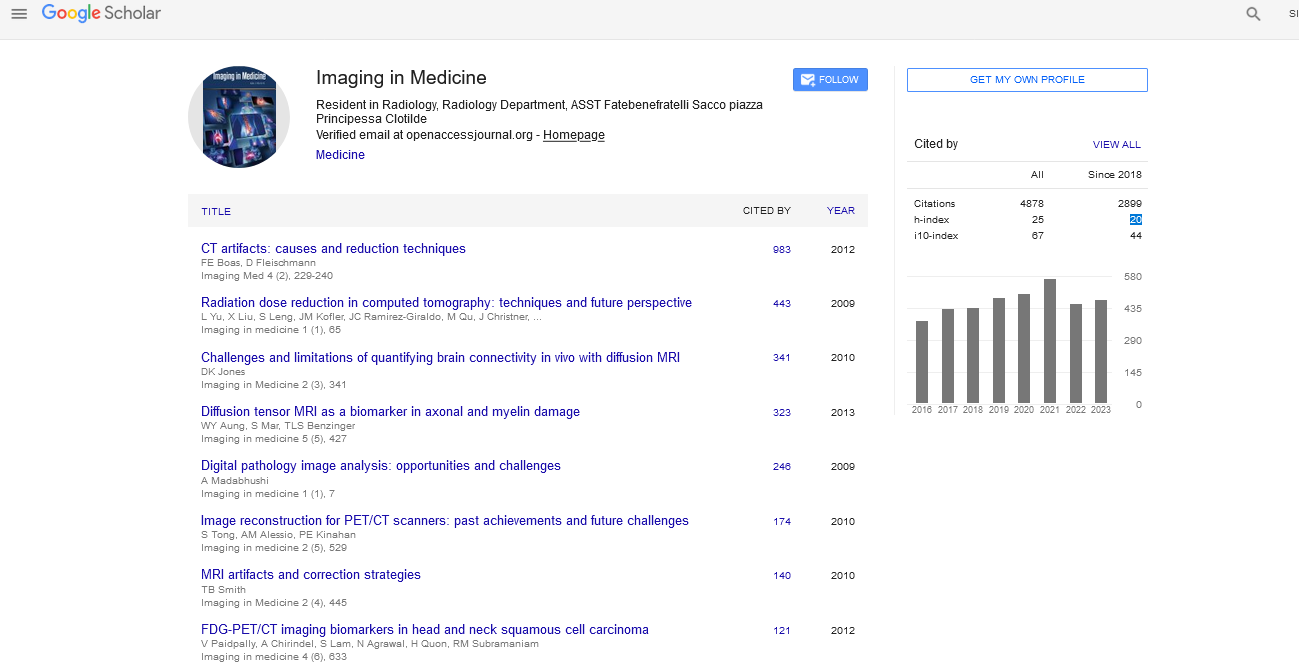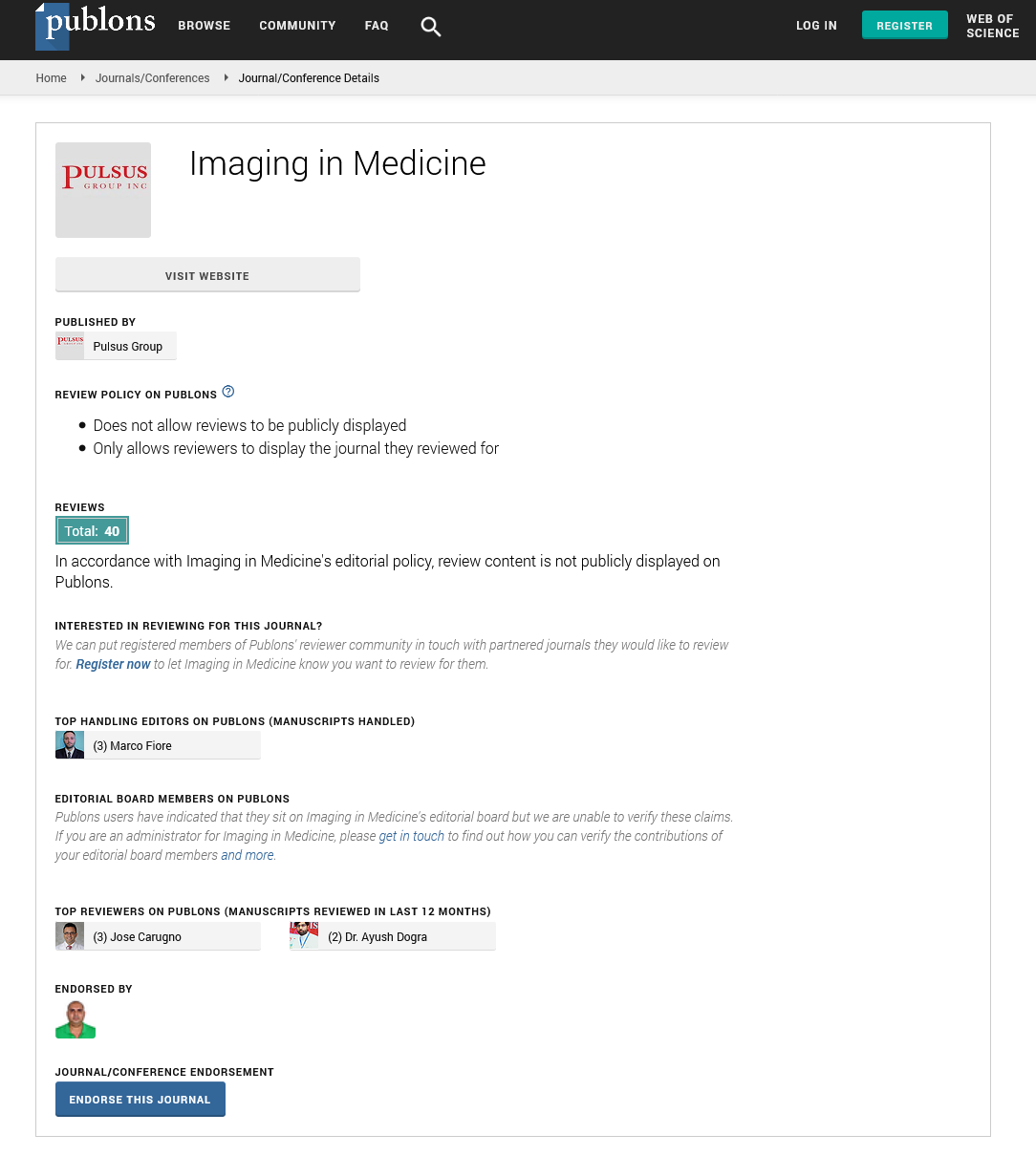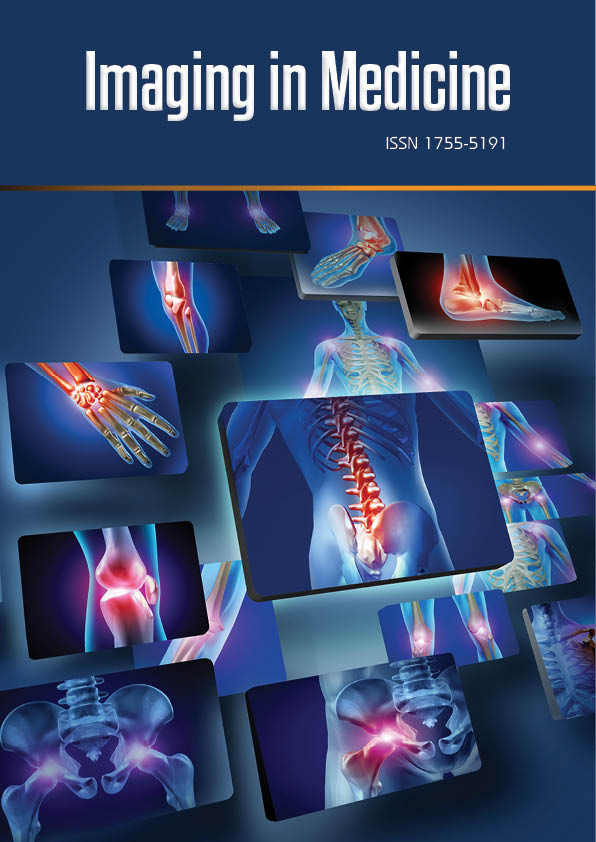Editorial - Imaging in Medicine (2025) Volume 17, Issue 1
Magnetic Resonance Imaging (MRI): Revolutionizing Medical Diagnostics
Tingting Zhou*
Department of Magnetic Resonance Imaging, National Center for Cardiovascular Diseases, Beijing, China
- *Corresponding Author:
- Tingting Zhou
Department of Magnetic Resonance Imaging, National Center for Cardiovascular Diseases, Beijing, China
E-mail: ting@zhou.cn
Received: 17-Jan-2024, Manuscript No. fmim- 25-169967; Editor assigned: 20-Jan-2024, PreQC No. fmim-25-169967 (PQ); Reviewed: 04-October-2024, QC No. fmim-25-169967; Revised: 14-Jan-2024, Manuscript No. fmim- 25-169967 (R); Published: 21-Jan-2024, DOI: 10.47532/1755-5191.2025.17(1).1-3
Introduction
Magnetic Resonance Imaging (MRI) is one of the most advanced diagnostic tools in modern healthcare. Unlike X-rays or CT scans, MRI uses strong magnetic fields and radio waves instead of ionizing radiation to produce highly detailed images of the body’s internal structures. Since its clinical introduction in the 1980s [1], MRI has become a cornerstone of medical imaging, widely used in neurology, orthopedics, cardiology, oncology, and many other fields. Its ability to capture soft tissue detail with exceptional clarity has made it indispensable for both diagnosis and treatment planning.
How MRI Works
MRI technology relies on the behavior of hydrogen atoms in the body. When placed in a strong magnetic field, these atoms align with the field [2]. Radiofrequency pulses are then applied, temporarily disturbing this alignment. As the atoms return to their normal state, they emit signals that are captured by detectors. A computer processes these signals to generate detailed images of tissues, organs, and blood flow. Because hydrogen is abundant in water and fat, MRI is particularly effective for imaging soft tissues such as the brain, muscles, and organs.
Applications of MRI
MRI has a wide range of clinical applications, making it a vital diagnostic tool:
Neurology: MRI is the gold standard for brain and spinal imaging. It detects strokes, tumors, multiple sclerosis, and degenerative diseases with unmatched clarity.
Orthopedics: MRI is used to visualize muscles, ligaments, cartilage, and joints, making it essential in sports injury assessment and surgical planning.
Cardiology: Cardiac MRI provides detailed images of the heart, helping doctors evaluate heart structure, blood flow, and damage after heart attacks.
Oncology: MRI helps identify tumors, assess their size and spread, and monitor treatment effectiveness.
Vascular Imaging: Magnetic Resonance Angiography (MRA) maps blood vessels without the need for invasive procedures [3].
Advantages of MRI
MRI offers several advantages that make it stand out among imaging technologies:
No Ionizing Radiation: Unlike CT or X-rays, MRI is safer for repeated use, particularly in children and pregnant patients.
Superior Soft Tissue Contrast: MRI produces highly detailed images, allowing better distinction between healthy and abnormal tissue.
Versatility: It can be adapted for different body parts and medical conditions, from brain disorders to joint injuries.
Functional Imaging: Techniques like functional MRI (fMRI) provide insights into brain activity, mapping regions responsible for movement, speech, and cognition.
Limitations and Challenges
Despite its benefits, MRI does have some limitations:
Cost and Accessibility: MRI machines are expensive to install and maintain [4], making scans costly for patients and less available in low-resource settings.
Time-Consuming: Scans often take longer than CT or X-ray exams, which can be difficult for patients with severe pain or claustrophobia.
Contraindications: Patients with pacemakers, cochlear implants, or certain metal implants may not be eligible for MRI due to magnetic interference.
Motion Sensitivity: Images can be distorted by patient movement, requiring patients to remain still for extended periods [5].
The Future of MRI
Advances in MRI technology continue to enhance its capabilities. High-field and ultra-high-field MRI scanners are providing even greater image resolution. Faster scanning techniques are reducing patient discomfort and improving efficiency. Functional imaging and diffusion tensor imaging are expanding our understanding of the brain, while AI-assisted interpretation is helping radiologists identify abnormalities more accurately. Portable and open MRI systems are also being developed to improve accessibility and patient comfort.
Conclusion
Magnetic Resonance Imaging has transformed medical diagnostics by offering safe, detailed, and versatile imaging of the human body. From detecting brain disorders to evaluating heart function and identifying cancers, MRI has become an essential tool in nearly every medical specialty. While challenges such as cost and accessibility remain, ongoing innovations promise to make MRI faster, more affordable, and even more powerful. As technology advances, MRI will continue to shape the future of healthcare, giving doctors clearer insights and patients better outcomes.
References
- Johnston AP, Naska S, Jones K, Jinno H, Kaplan DR, et al. (2013) Sox2-mediated regulation of adult neural crest precursors and skin repair. Stem Cell Reports 1: 38-45.
- Novak D, Huser L, Elton JJ, Umansky V, Altevogt P, et al. (2020) SOX2 in development and cancer biology. Semin Cancer Biol 67(Pt 1): 74-82.
- Kerr JF, Wyllie AH, Currie AR (1972) Apoptosis: a basic biological phenomenon with wide-ranging implications in tissue kinetics. Br J Cancer 26: 239-257.
- Kim C, Kim B (2018) Anti-Cancer Natural Products and Their Bioactive Compounds Inducing ER Stress-Mediated Apoptosis: A Review. Nutrients 10:
- Chaudhary S, Islam Z, Mishra V, Rawat S, Ashraf GM, Kolatkar PR (2019) Sox2: A Regulatory Factor in Tumorigenesis and Metastasis. Curr Protein Pept Sci 20: 495-504.
Google Scholar, Crossref, Indexed at
Google Scholar, Crossref, Indexed at
Google Scholar, Crossref, Indexed at
Google Scholar, Crossref, Indexed at


